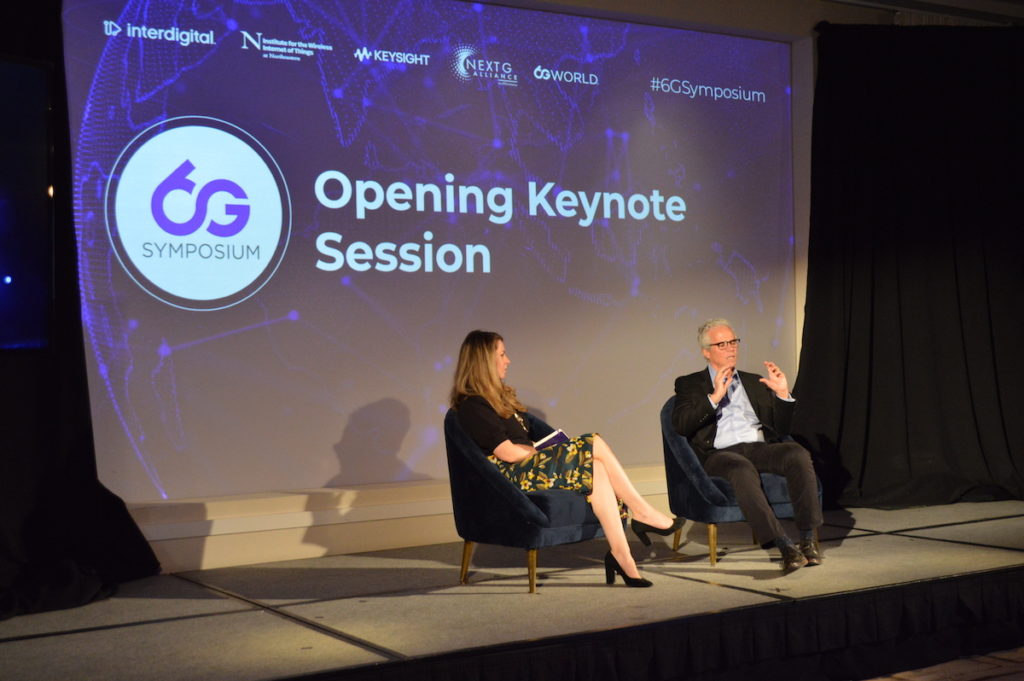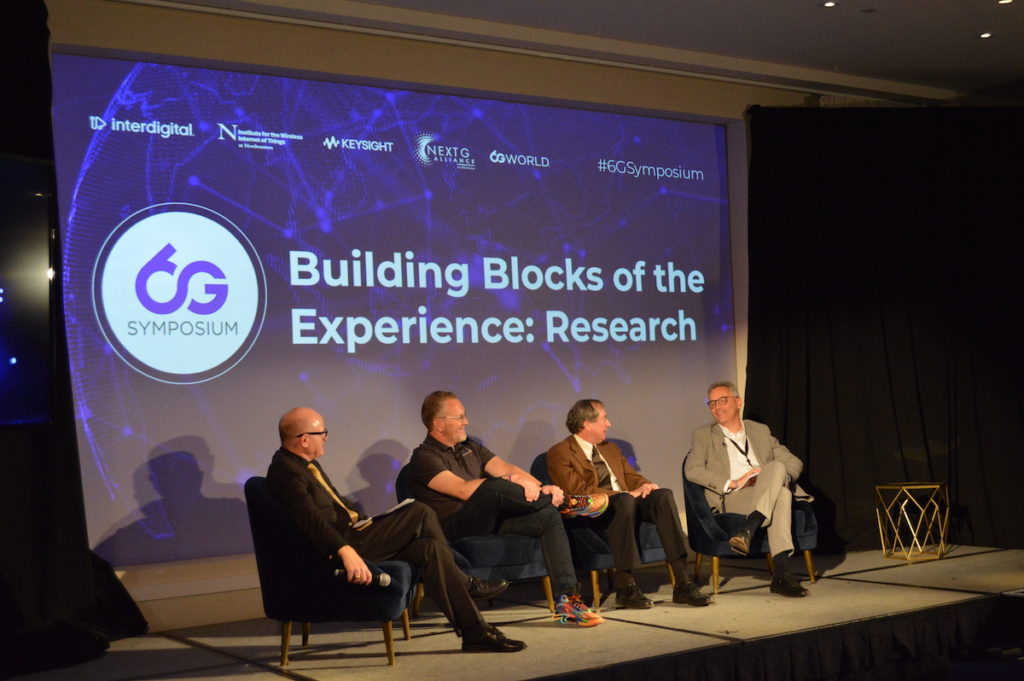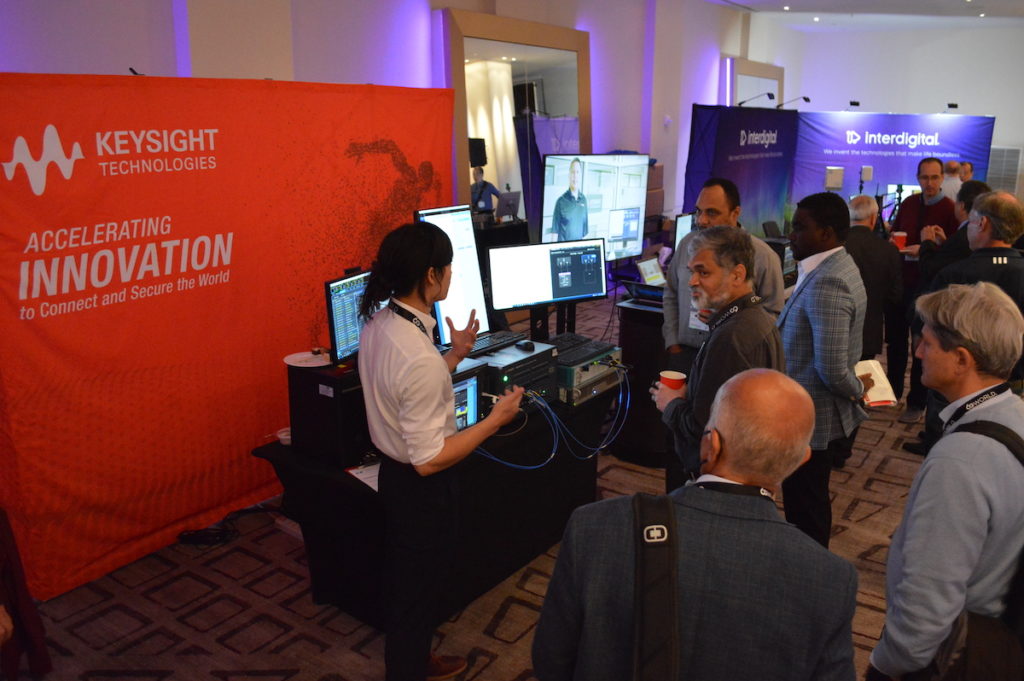Today saw the opening day of the 6GSymposium in Washington DC. Though not the first 6GSymposium, it was the first live in-person event, bringing together a variety of viewpoints under the theme “Building The 6G Experience”.
With the ITU’s member states broadly aligned on a vision for 6G as a more secure, sustainable platform for building future economies and societies, we are reaching the point where academia, industry and government need to translate those visions into firm actions.
Mike Nawrocki, Managing Director of event partner ATIS Next G Alliance, wasted no time setting out some of his key points in response to this need.
The Next G Alliance, he said, is making recommendations about North American research priorities and collaboration between government, private sector, and leading research communities. Establishing a clear and coordinated 6G vision at a regional level will support North America’s role in defining 6G standards later.
“We have great industries, great universities in North American, we can harness these resources,” he said. “We have the scientific research model, but there’s something on top that is holistic. How will the strategy be done, the funding to make all come together?”
Meanwhile, Thyaga Nandagopal of the National Science Foundation highlighted the essential role of partnerships in addressing key facets of 6G: namely ubiquitous, universal, reliable, and resilient multimodal broadband connectivity. While people get carried away with potential speeds and bit rates, actually making sure that coverage is truly everywhere will require different approaches to collaboration as much as technology.
“You need a robust infrastructure to test new ideas,” Nandagopal said, adding that the NSF has been funding several initiatives across the country – at least ten concerning advance wireless. “It’s been a fantastic experience being at the forefront of it.”
Another important step towards innovation – and a part of the robust infrastructure Nandagopal mentioned – is the support for open databases provided by RFData Factory, a collaborative platform put together by Northeastern University and Rice University. It is available for free for researchers everywhere.
It’s Also About All the Rest
The point that 6G is about much more than technology was taken further in a subsequent discussion exploring the societal outcomes that governments including in the US are setting as KPIs for 6G.
While the telecoms industry is used to working towards technical KPIs, how will demands for ubiquity, trustworthiness or sustainability translate into the process of research and standardisation?
“If you look at the studies being done by governments, academia, and industry around the world, they all march in the direction of immersive, inclusive, and sustainable connectivity, augmented with intelligence and sensing,” observed Milind Kulkarni, VP and head of Wireless Lab at InterDigital.
According to him, this landscape presents several issues that will have to be addressed while scientists figure 6G out. “Do we have sufficient funding to bring about the expected technologies [of the future]?” he asked. “New areas bring new security and privacy challenges that need to be addressed by technology development, tools, and policies.”
Meanwhile, the elephant in the room – how the geopolitics of competition between North America and other regions would work itself out – was one of the topics for a conversation between Open RAN Policy Coalition (ORPC) chief Diane Rinaldo and Cohere CEO Ray Dolan.

Diane Rinaldo (ORPC) and Ray Dolan (Cohere) had a fireside chat about the future for 6G
“Diplomacy is extremely important. We need to come out with a global push to make networks open, and we need to push for western leadership again,” Dolan said.
For Kulkarni, countries have to avoid a step backwards due to competition. “One of the issues for 6G going forward is the intense geopolitical divide and struggles. It would be sad if we had political issues that defragments the research on 6G,” he voiced.
While the term “industrial policy” is practically taboo in DC, the US government’s involvement encouraging and funding particular outcomes does seem to be very similar to what might be seen in the EU and elsewhere.
Given that the US government is looking for particular outcomes – to support its society with digital equity, trust, sustainability, and global competitiveness – it makes sense to collaborate with the market rather than leave the outcomes to chance. The balancing act of how much to intervene or direct will no doubt be a delicate judgment for the coming decade at least.
The 6G Experience
While the 6GSymposium featured a variety of demos emphasising some of the cutting-edge high data rates, zero-energy sensors and more, it fell to a variety of experts to expand upon how aspirations for 6G might translate into actual lived experiences. As with previous generations of telecoms, 6G in itself won’t change a great deal, but in conjunction with other emerging technologies it could be transformative.
Cathy Hackl, Chief Metaverse Officer at Journey, kicked off by highlighting the aspirations for what the metaverse could be – and what it will not.
“The reality is that the metaverse is being built today. It’s not here in its full form,” Hackl warned. But she came to say what the metaverse is not. “It is not just virtual reality, it is not one single technology, and it is not one single company. Don’t seek to define it, seek to build it.”
Meanwhile, Mari Silbey from US Ignite, a programme supporting the development of smarter cities across the US, was keen to underscore some of the continuity and growth from today’s services.

Panelists discussed how the 6G experience might look like
“There’s the practical way we live today, where the market of closed ecosystems is fracturing; and then there’s the wireless ecosystem of tomorrow, recomposed with very specific services. There are huge numbers of new channels to create revenues, but with smaller increments per channel.”
Commercial considerations were top of mind for Verizon Robotics’ Chris Sherrick, emphasising the opportunity that lies ahead, but also the reality on the ground today and the need to tread the path between the two.
“The idea of robotics today is tainted by what you see in commercials,” he noted. “There is a misconception that technology is a lot more advanced than it is today. My role to convey to enterprises what the technology could be in the future, but what the value of it is today, so that people don’t miss the boat in future.”
Building the Experience
The day also featured explorations of vital building-blocks to create the outcomes necessary for 6G. Professor Eric Burger of Virginia Tech assembled a group of leading academics to focus on the process of research – from fundamental research, to applying it, then to industry collaborations.
With North America feeling the pressure to compete globally on innovation, the participants were keen to highlight a number of issues. After all, as Burger pointed out, “Universities have historically been generators of ideas, but historically not so good at execution.”
“We’re trying to do things slightly differently,” Tommaso Melodia commented of Northeastern University’s Wireless Internet of Things programme.

“We try to start from basic science, but the students get to a prototype. We’re also trying to break down barriers between policy, business, machine learning, sensing, communications. And we’re also trying to break barriers between commercial and academic worlds.”
Tom Marzetta of NYU agreed, encouraging the gathering of students with real ambition to think differently. “Maybe we will have to go up into Terahertz spectrum, but what has that to do with the kind of modulation or scheduling or anything else that we use? Have some vision!” he noted.
This, however, is not enough. Other fundamental elements for any future communications system include spectrum – increasingly a controversial and contested resource between licensed and unlicensed players. Managing this effectively will be essential for future services, and ideas were not in short supply.
“I was thinking that 6G may be the sum of all things, that 6G would be the combination of all access networks,” Andy Thiessen commented, but was cautious on the reality. “The US is leading in the amount of unlicensed spectrum we have to offer, but if you look at how it’s been used in previous generations it hasn’t been getting much play.”
“The key is that spectrum research is going on across the board, and then hope to make the make the most use of everything we have,” commented Keysight’s Roger Nichols. “We really have to make the most of the spectrum we have available, whether it’s novel above 100GHz or tried-and-true mid-band spectrum.”
He highlighted the need for better abilities and understanding of spectrum sharing to improve utilisation across industries.
More to Come

Northeastern University, Keysight, InterDigital, and Ericsson have demos on-site
We also began to explore future radio network architecture, testbeds to realise the research, and much more. We can’t begin to do justice to the complexity of the issues in a short summary article.
However, day 2 will see deeper dives into specific areas of the technology transformations underpinning the move from basic 5G through 5G-Advanced to 6G, such as AI, the convergence of computing and communications, distributed computing and more, as well as investigating the impact of industrial demands on the shape of future network services and architectures. Tune in tomorrow for a summary of those discussions.
Recordings of sessions and speakers from 6GSymposium will be made available on the 6GSymposium website later this month. Here you’ll be able to take in 12 hours of conference content, view the demonstrations and more. And join us on 1st November for a webinar summarising some of the key takeaways and impressions from the perspective of key stakeholders and experts.
Article by Alex Lawrence and Caio Castro







